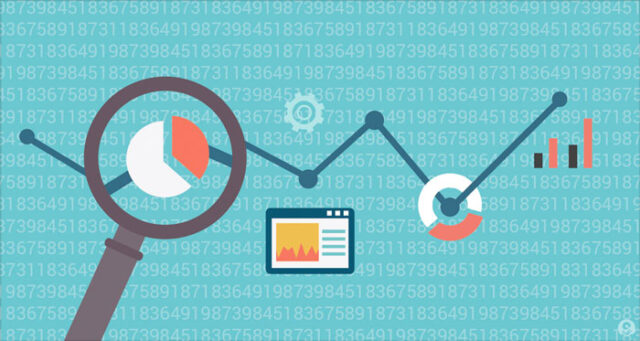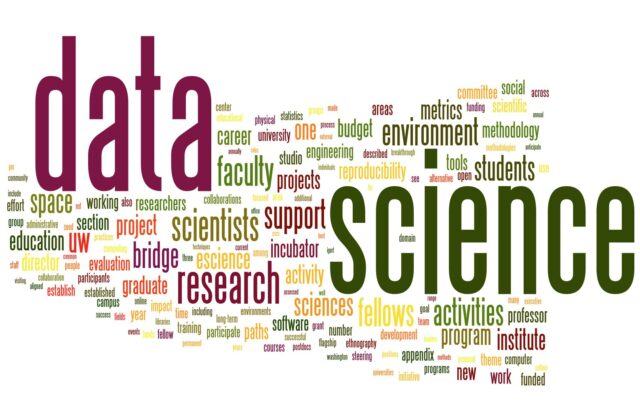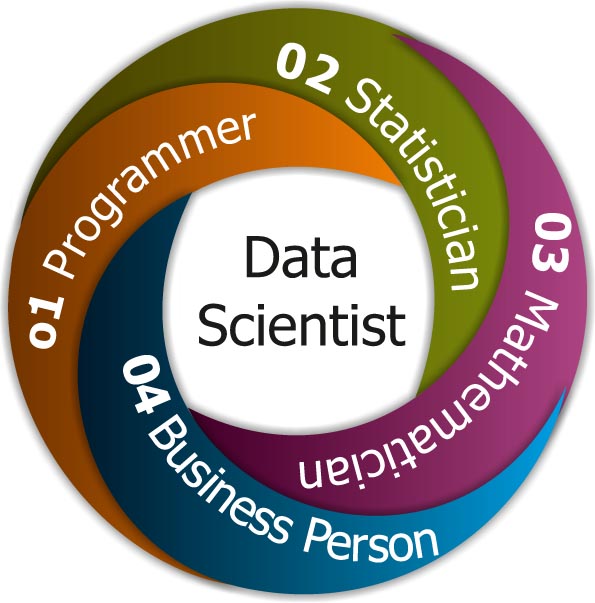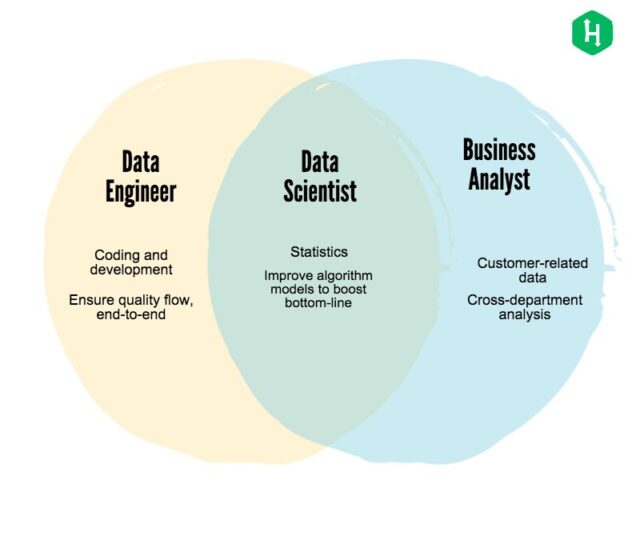
Ever heard about data science? You probably did, but do you know what it does? What benefits can data science give to the community? What people work in that area and what they actually do? Lots of people don’t have a clue about some important things related to data science. Luckily, this article will explain it all.

First of all, you need to know the definition of data science. What it does? Data science uses automated methods for easier analyzing of extremely large amounts of different data and extracting some useful information and knowledge from that data. Those methods are becoming more and more used everywhere and data science is helping to create some new science branches and improve the areas of social science. The data that comes from mobile sensor, web and some sophisticated instruments is growing all the time so we can expect that trend of automated methods will continue to grow and improve.
Jobs in Data Science
There are lots of careers in data science industry. Some careers pay more money and some pay more. But who are the people working there? And what do they do? There are 8 main careers in data science industry. Those are:
- Data scientist
- Data analyst
- Data architect
- Data engineer
- Statistician
- Database administrator
- Business analyst
- Data and analytics manager
First of all, we have data scientist. People often say that data scientist is part scientist and part artist. Average salary of data scientists can be from $95,000 to $120,000.
The job of data scientist is to combine his knowledge of computer science, statistics, analytics, mathematics, modelling, applications and other and use it to get some detailed insights in data. Once that is done, data scientist must combine those insights with business acumen and communication and help his organization in better approaching and solving different challenges.
To do all of that data scientist must extract data from different sources, enter it into analytics platform and create readable visualizations of that data. Once the visualizations are done, data scientist must analyze that data and look for trends that will present some opportunities or problems in business.
People who work (or want to work) as data scientists must have good knowledge of different languages like R, SAS, Python, SQL, Hive, Pig, Spark, SQL and others. Some of the skills required to do this job are distributed computing, great story-telling and visualizing, predictive modelling, math, stats, machine learning and similar.

The second job in data science industry is data analyst. The career of data analyst is actually the lowest paid career in data science with an average salary of about $55,000 to $70,000. What does data analyst do? He collects, processes and performs different statistical analyses of data. The main difference between data scientist and data analysts is that analysts don’t have to create new algorithms and have skills for that. But their goal is the same, to analyze data and discover opportunities and solve problems. Some of the things data analysts to is they analyze and interpret results with statistical tools. They can also design and maintain data systems and relational databases. Data analysts should also mine data from given sources and work with different teams to determine goals of the organization. To do the jobs of data analysts one must know different languages like C/C++, SQL, JavaScript, HTML, SQL, Python, R and similar. Some of the skills required for this job is expert knowledge of spreadsheet tools (Microsoft Excel), familiarity with database systems and good communication along with visualizations.
Data architect wasn’t much necessary in the past but the importance of this role is becoming higher in data science industry of today. Data architects are responsible for creating blueprints for data management systems. After they get data sources of company they need to design a plan for integrating, protecting and maintaining them. In that way every employee of the company can access those sources when they are needed. Other jobs of data architect include implementing different measures that will ensure accuracy and accessibility of data, developing data models for database structures, creating a fluid vision of data flow through the whole organization. Some of the skills and talents that are necessary are expert knowledge of SQL, XML, Hive, Pig and Spark along with knowledge of system development, data modelling, database architecture, warehousing solutions of data and similar. The average salary of data architect is about $90,00 to $110,000, depending on the company.
The fourth job in data science industry is data engineer. The average salary of data engineer can be from $85,000 to $105,00. His job is to build a data pipeline that will clean, transform and aggregate messy and unorganized data into database or some data source. Lots of data engineers are actually software engineers and their main responsibility in data science industry is to compile and install different database systems and write complex queries that will allow data scientists and data analysts to retrieve the data they need for experiments and analyses. According to Quanthub, some of the skills that data engineers must have are knowledge of lots of languages like SQL, Python, Ruby, C++, Perl, SPSS, SAS, Matlab, Pig, R and similar. They also must have expert knowledge of database systems, ETL tools, Data APIs and data warehousing solutions.
If you want to be a statistician then you could have an average salary from $65,000 to $85,000. Statistician is not an easy job and the skills required are the knowledge of different languages like R, SAS, SPSS, Matlab, Stata, Python, Perl, Hive, Pig, Spark, SQL and similar. Statisticians should be well familiar with all the cloud tools, statistical theories and methodology, data mining and distributed computing. What they actually do? Well, statisticians have an expert knowledge statistical theories and methods and they use them to collect data and then analyze and interpret it. Some of the main responsibilities of statisticians are to identify trends and relationships within data, present reports and visualizations for audiences, monitor data quality, decide on the strategies that will be used to collect data, design new and better statistical models and tools if that’s needed and lots of other stuff.
The next job in data science industry is the DBA, database administrator. The main job of database administrators is to direct and perform activities that are related to maintaining a database and its environment. That includes the design, implementation and maintenance of database systems, establishing procedures pertaining to management, maintenance and security of database systems. Database administrators are also responsible for training of employees in database management. The main languages that database administrator must know is expert knowledge of SQL, Java, Ruby on Rails, XML C# and Python. They should also have skills in backup and recovery, data design and modelling, distributed computing, knowledge of database systems and data security along with ERP business knowledge.

Do you know who is a business analyst? And how is he connected to data science industry? Business analyst is actually a very important person in some big data company. Business analyst must operationalize the use of big data within some function or process. They should also focus on operational information and trends of performance. They are mainly responsible for creating insights that will later be converted into business value. In more easy way we could say that business analysts improve processes of some business. The main responsibilities include inventing new business systems, establishing objectives of IT system, conduct surveys, statistical analyses, organize workshops and give recommendation of IT systems. The average salary in business analysts career is about $55,000 to $75,000. Business analyst doesn’t have to know lots of languages, only the SQL but they must have expert knowledge in MS Office tools, data visualization tools (like Tableau), excellent storytelling talent, intelligence in understanding business, data modelling knowledge and great communication.
The last career in data science industry is data and analytics manager. Data managers are responsible for creating a database system that will meet the needs of company, team or some individual for the data they gathered. The job is very similar to the job of database administrators. Some of the responsibilities of data and analytics manager include identifying the needs and creating a database that will satisfy those needs. Some other responsibilities include merging old and new databases into one database and backing up the information in databases. The average salary of data and analytics manager is pretty high and only data scientists have larger average salary. The money you could get is around $105,000 and $125,000. People who want to work as data and analytics managers should have knowledge in languages like SQL, R, SAS, Python, Matlab and Java. They should also be familiar with database systems, must have great interpersonal communication and high leadership and project management skills.
So, which career do you like the most? Are you planning a job in some data science industry career? Or are you maybe already working in some part of data science industry? Share your experience and opinions with us in the comment section. And to find out more visualized details about every career check the infographic below. Enjoy!














